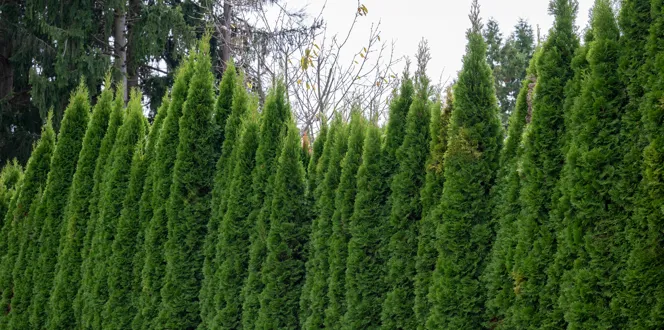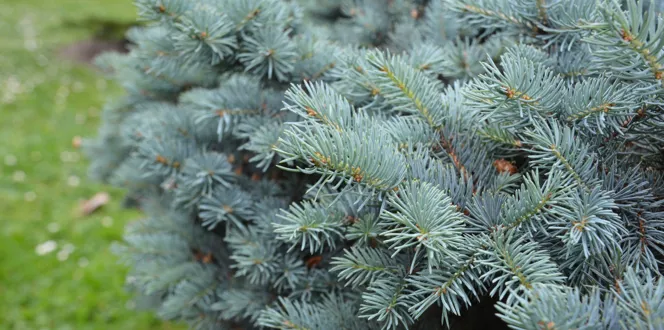Spring is on its way, and with it usually comes melting ice from winter, as well as quite a bit of rainfall – depending on your region.
After all, they don’t say April showers for nothing.
And climate change has also increased precipitation in some regions of the U.S., so flooding in these areas is more likely.
But it can make you wonder, “How does flooding affect trees?” and “How do you care for a waterlogged tree?”
Let’s talk about how to help waterlogged trees recover, so you can be prepared for spring’s rainy season.
Symptoms Of Flood Damage
The potential for flood damage to trees depends on when and how that flooding occurs, the species of trees, as well as the state of the current tree’s health.
Flooding will change soil conditions, interrupt oxygen getting to trees’ roots, and stress trees, making them more susceptible to insect and disease damage.
Trees that experience floods may suffer these visible symptoms:
- Leaf chlorosis or yellowing followed by leaf loss
- Smaller leaf size
- Early fall coloration and leaf drop
- Crown dieback
- Small shoots emerging from the main stem
- Alterations in seed crops in years after a flood (no seed crops or large seed crops)
But will an overwatered tree recover?
Can You Save Waterlogged Trees Or Shrubs?
Trees are more susceptible to flood damage in late spring just after their first flushes of growth and during the summer growing season versus during the dormant season.
If a flood occurs by heavy rain or snow melt in late winter or early spring when they’re not actively growing, and the water recedes within a few days, flooding is not likely to cause a problem.
But during the growing season, especially when weather is warmer, flooding will quickly cause major, long-term damage to sensitive trees and shrubs. Roots are actively respiring during the warm growing season and have more oxygen demand. Brief periods of flooding can begin to kill roots of sensitive upland species during the growing season. Wetland species such as baldcypress and water tupelo can survive 3 to 5 months of flooding.
How Does Flooding Affect Trees?
- A longer flood during the growing season can decrease the height and diameter growth of trees which are moderately tolerant, but can kill trees which aren’t flood tolerant.
- Flooded soil limits oxygen supply to tree roots by preventing air movement in soils, preventing root respiration and leading to root death.
- Flooding increases the pH of acidic soils and decreases the pH of alkaline soils.
- Flooding can wash away soil around the base of trees, exposing their roots and making them more vulnerable to uprooting.
- Flooding can also deposit sediments around the bases of trees, leading to basal rot, unexpected rooting and girdling roots.
- There is a likelihood of increased boring insects attacking stressed trees, as well as the introduction of root rot diseases during the flooded conditions.
How To Help Your Plants Recover
Trees that are healthy before a flood are more likely to survive flooding.
But how do you care for a waterlogged tree?
Once the ground dries out a bit and is stable enough for equipment, try these tips:
- Carefully remove excess sediment from around trees without crushing exposed roots or damaging the tree further.
- Fill in low spots from eroded soil with similar soil that matches the composition and texture of the current soil, and be sure to include at least 5% organic matter by weight with any soil.
- Replace mulch in areas where it’s been washed away.
- Monitor flooded trees for symptoms of stress.
- Fertilize flooded trees as needed based on a soil test
- Preventatively treat trees for root rot diseases.
- Establish better drainage contours and structures where possible Barriers to flood waters might also be an option,
- Wash salts out of soils flooded by salt water using irrigation with fresh water. Every six inches of fresh water applied will reduce soil salt content by 50%, but do not apply more than 2 inches at a time.
- Have a certified arborist evaluate trees growing near structures or high-traffic areas since these trees have the potential to harm people or your property by dropping limbs or toppling over
- Flooding can kill many of a tree’s small feeder roots. Monitor trees after flood waters recede to ensure they don’t become stressed further.
- When planting or replacing trees in flood-prone locations, choose tree species that can handle excess water or can absorb additional soil moisture.
Remember, talking to a certified arborist about how to care for a waterlogged tree can ensure your plant gets the proper care and attention it needs after a stressful event like a flood.







